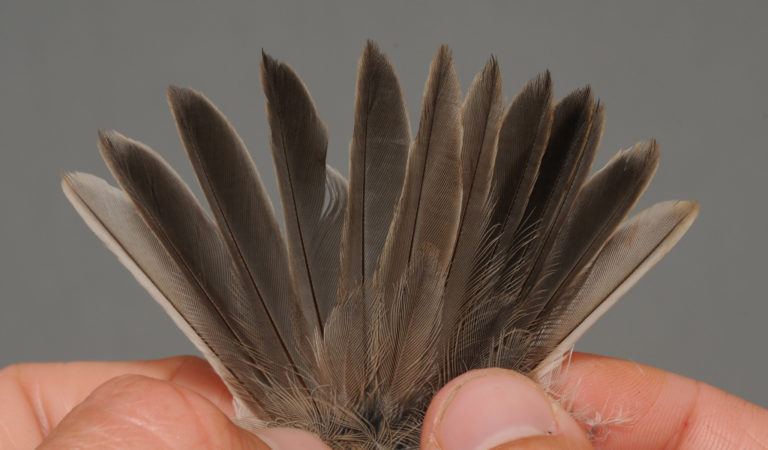

Lesser Whitethroat
AGE – BEST CRITERIA:

1cy August. Juvenile RR are generally more narrow, slightly more pointed and show a less good feather quality (less dense, less gloss and with a brownish ground colour). R6 shows pale markings in off-white or greyish-white and R5 lacks broad pure white tip. The whole tail is juvenile with no moulted post-juvenile RR present in this bird. [CP39844]
More Sylvia curruca:
Ageing spring
Moult
Ringers’ DigiGuide is sponsored by: